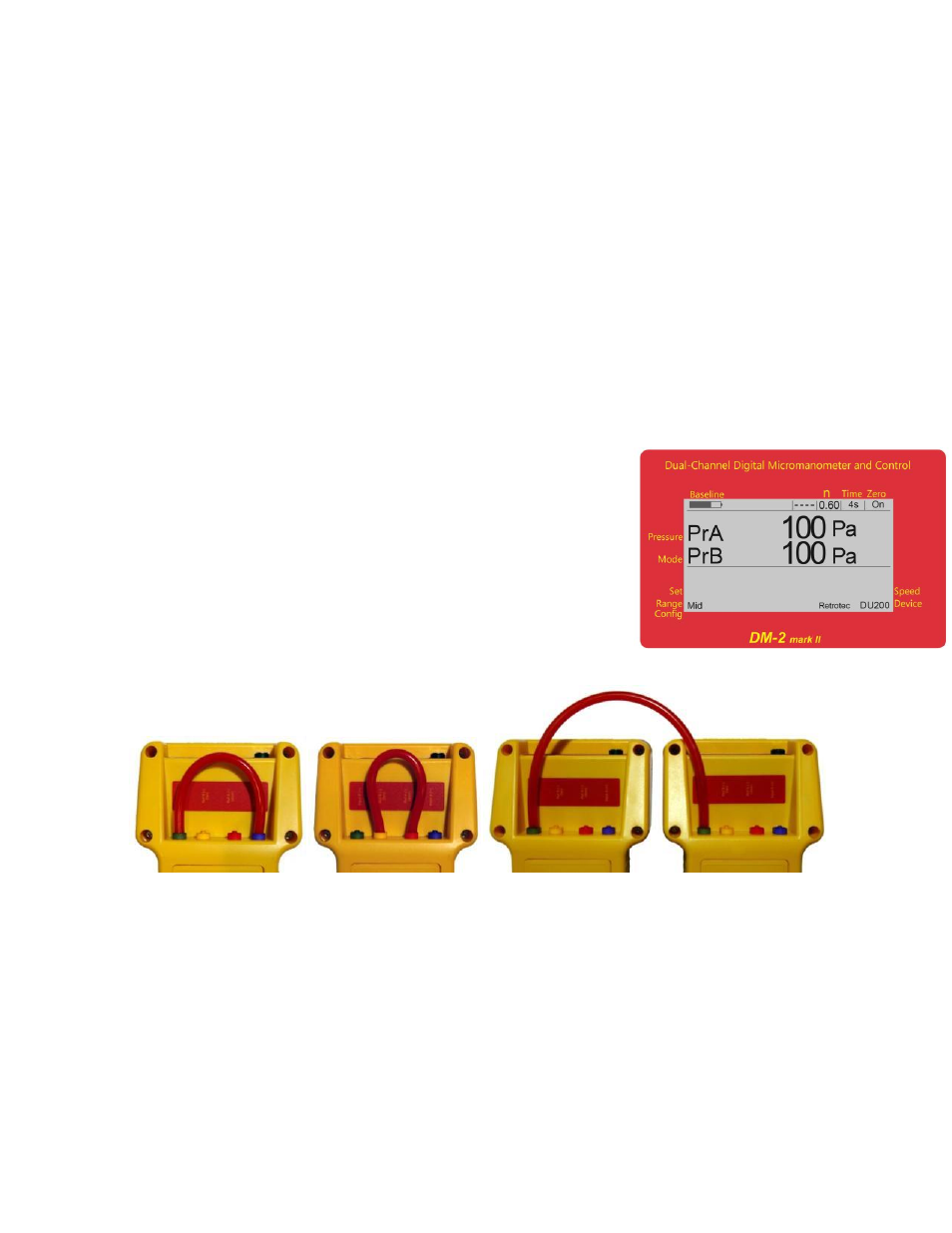Field check the gauge, Field check the tubes – Retrotec DucTester 200 Series Residential Applications User Manual
Page 63

Page 63 of 91
©Retrotec Inc. 2015
11. Field Check the DucTester to find out what is not working
Standard procedure says you calibrate your gauges every year or two, but does this really make sense?
The gauge can be calibrated regularly but when did the gauge go out of calibration? Last week or last
year?
There is a quick way to field-check your gauge regularly or before an important test. Gauge calibration,
where errors are typically a few %, is not as frequent a cause of problems when compared to blocked,
leaking or pinched tubes that happen more often and can yield errors of 10 or 90%. Sending your gauge
in for calibration does not address those problems but doing a field check will.
11.1
Field Check the gauge
To verify the calibration of a gauge, the easiest method is to compare the readings of one channel with
respect to the other channel. If the pressures are equal, then it is likely the gauge is accurate, because
the chance of both channels being out of calibration by the same amount is very small.
To perform a cross port check
1. Press [Exit] to ensure there is no “Baseline” and then press [Time
Average] repeatedly until “4s” appears.
2. Press [Mode] until both channels display pressure (in Pascals, Pa).
3. Connect the Input port of Channel A to the Input port of Channel B
using a small piece of tubing that is known not to be blocked or
pinched. The measured pressure on both channels should be
within 2% of each other.
4. Disconnect the tubing, and then connect the Reference ports of
both channels using the same piece of tubing. The measured
pressure on both channels should be within 2% of each other.
5. Use a longer piece of tube to check the gauge at lower pressures.
6. Turn off [AutoZero] to stop the pressure from dropping.
Figure 49: Gauge field check configurations (cross-channel checks (left), cross-gauge checks (right).
The same procedure can be followed to compare two gauges by setting up as shown on the right of
Figure 49. The reading for “PrA” and “PrB” on both gauges should be the same.
Gauge calibration has now been checked, removing that major source of error.
11.2
Field Check the tubes
A problem that is a lot more common than gauge calibration is pinched or blocked tubes. They can be
pinched inside the gauge were you’ll never see it or even inside the fan. Tubes often get temporarily
